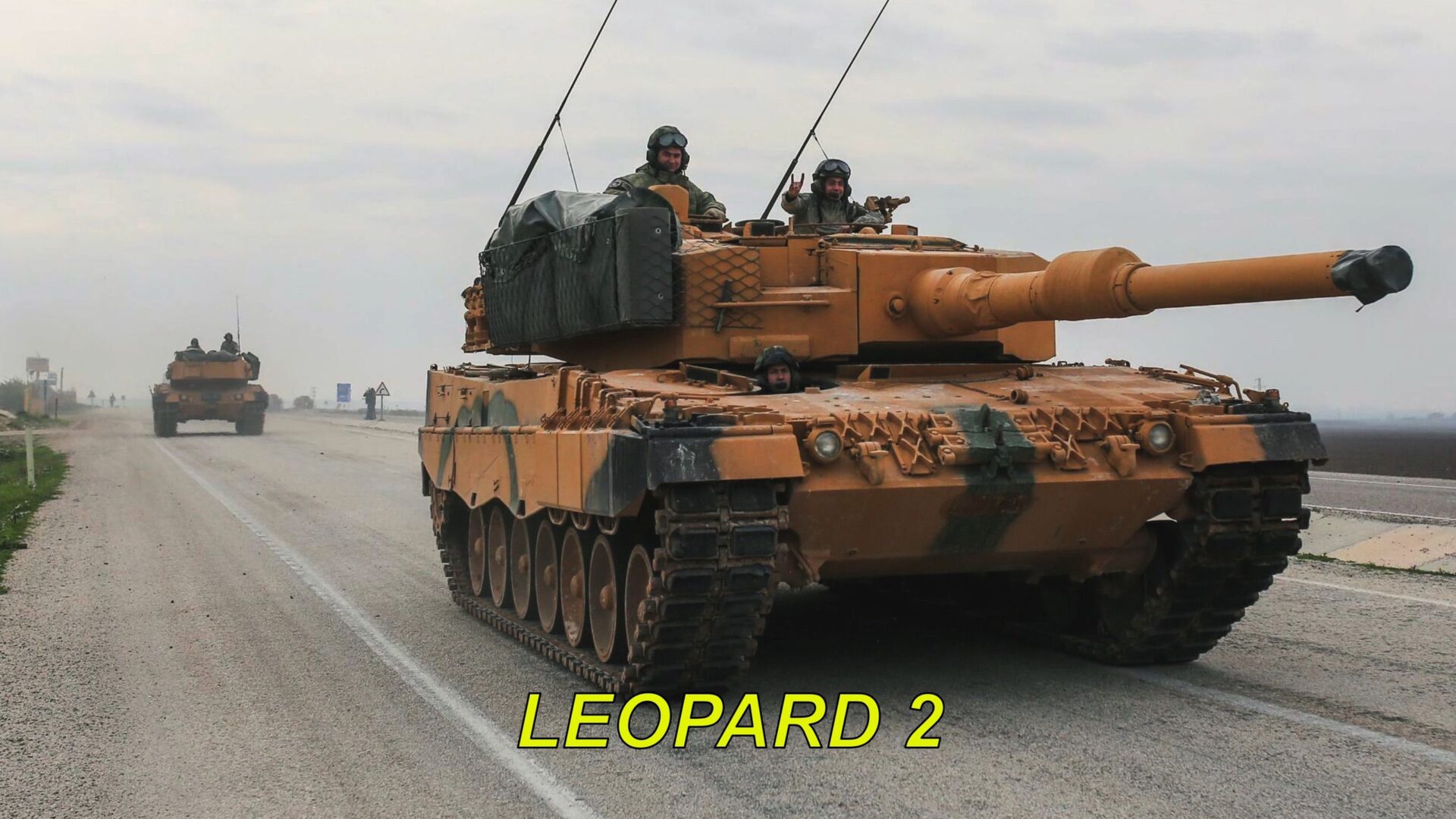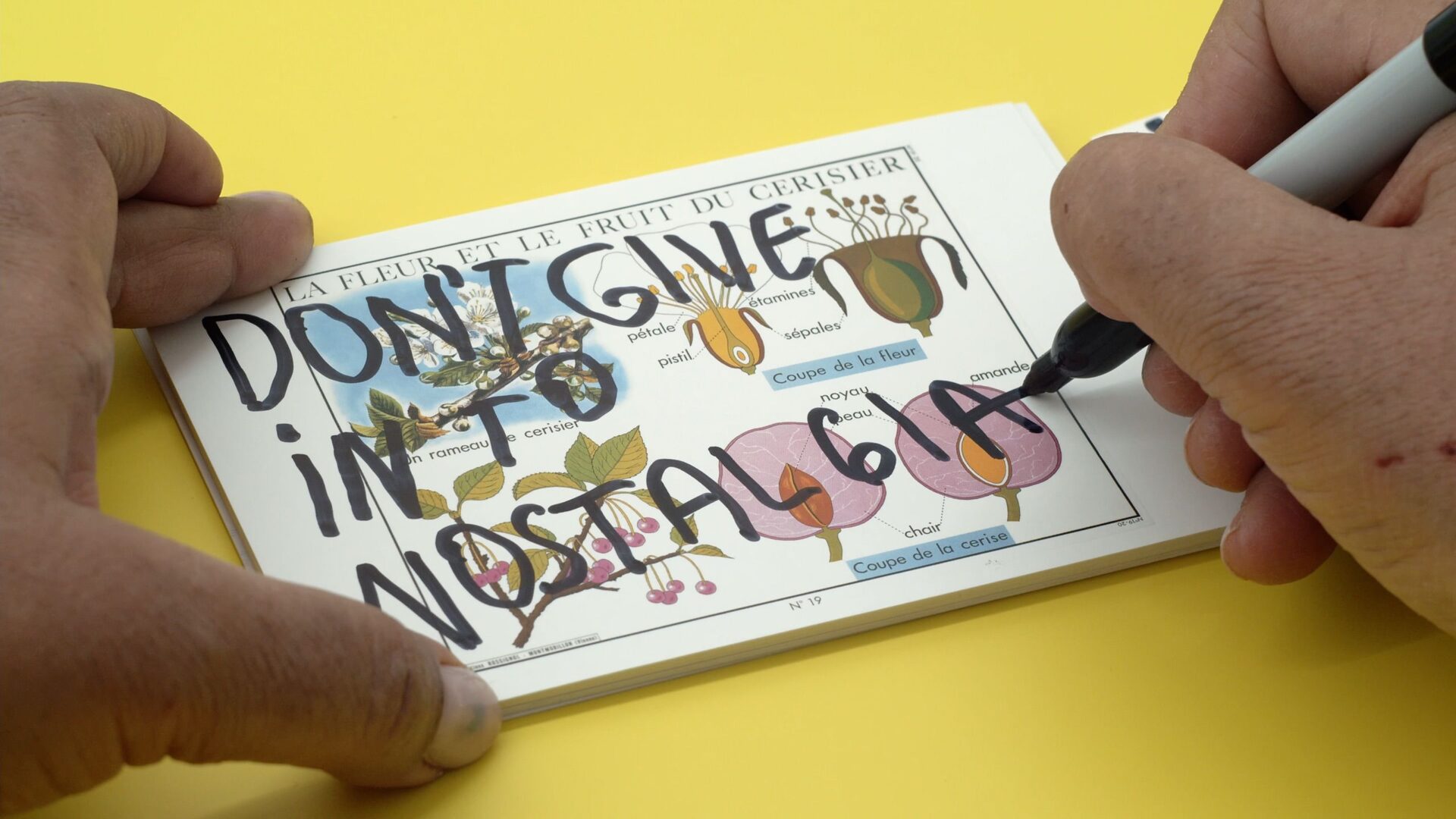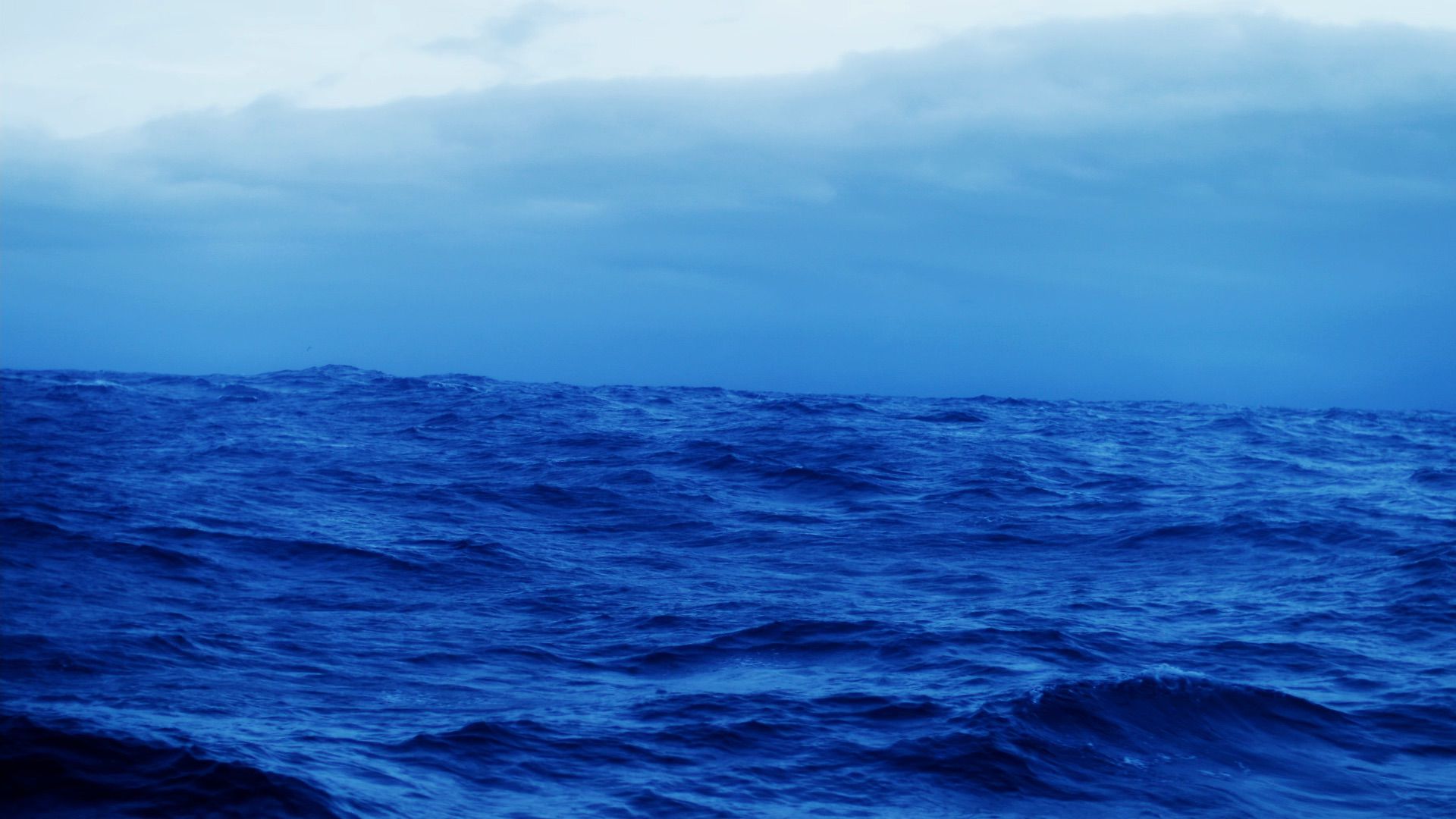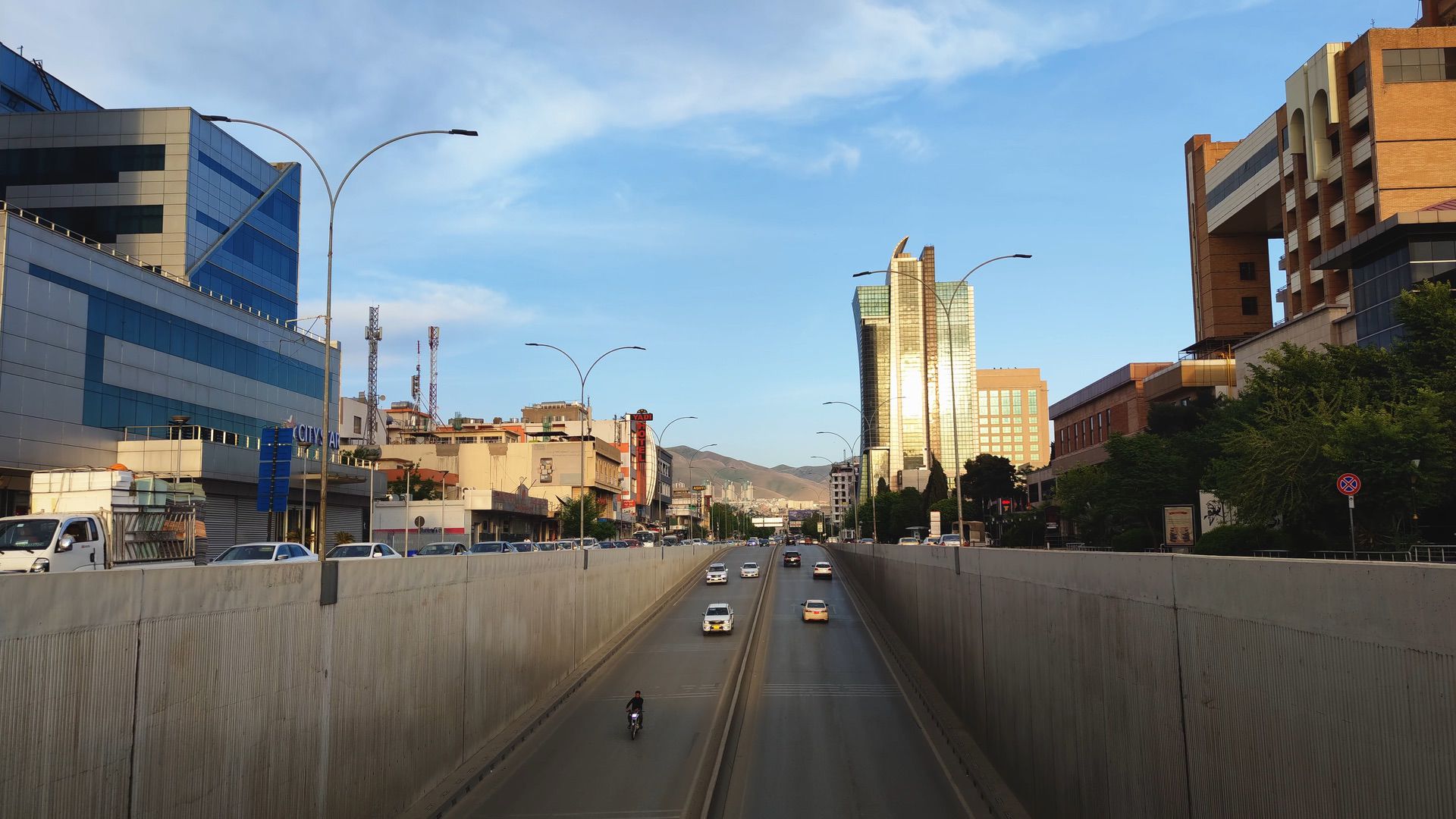
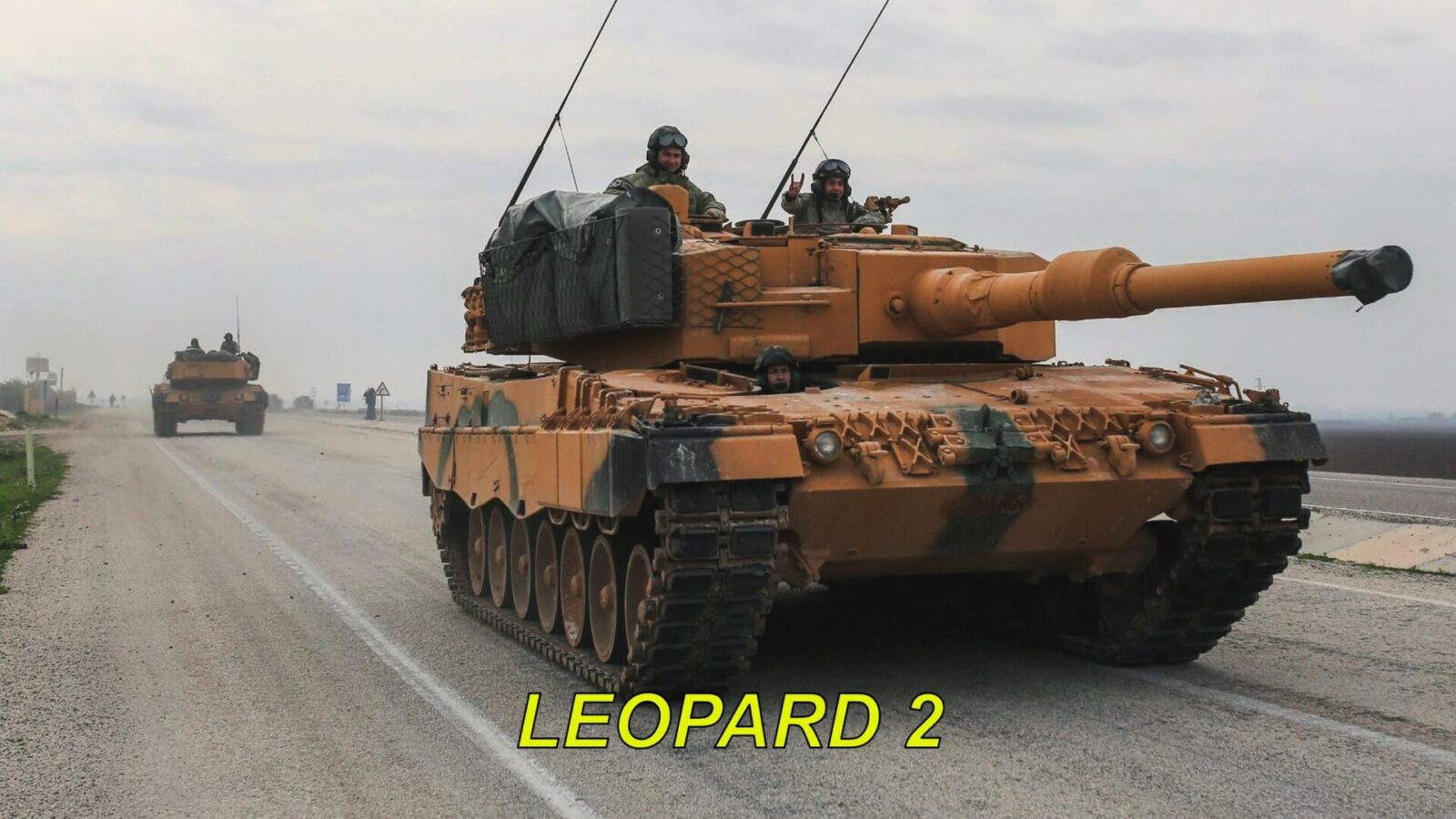
Bad People, Bad NewsBad People, Bad NewsBad People, Bad News
The historical background for the essayistic film installation Bad People, Bad News is the story of the Victory Arch monument erected by Saddam Hussein in 1989. This consists of two triumphal arches, each formed by two 43-metre-long swords held by arms protruding from the ground. The arms and hands for the monument were made in Europe and are said to have been modelled on Hussein himself, who reportedly had many doubles. A copy of his fingerprint was stored in the safe of the London foundry responsible and caused a stir when Hussein was arrested and questions were raised about his identity. Starting with the history of the monument’s creation, the installation addresses the question of how the ideologies of dictatorships become part of the writing of history. It is situated in the context of addressing the propaganda machinery of the Islamic State terrorist militia and its brutal strategies of destroying archives and monuments, and the theft and sale of art and cultural assets, as well as media self-dramatisation at cultural sites such as Palmyra.
In this essayistic film, the different contexts, stories and experiences of three Kurdish women are recounted and interwoven. They meet every year in a different presidential suite of a hotel to celebrate the death of the ex-president and dictator Saddam Hussein. The focus is on a box they always carry with them. It is an archive of drawings, texts, and events that they created after Hussein’s death. From this collection, they draw details and cues that set their stories in motion again and again. In this way, an overall narrative is formed about states, dictatorships, monuments, terror and questions about power and interpretive sovereignty, originality, and forgery. The film resists the staging of media images by avoiding them altogether and negotiates the possibilities of memory itself as it tells a story about the disappearance.
Historischer Ausgangspunkt für die essayistische Filminstallation Bad People, Bad News bildet die Geschichte um das von Saddam Hussein 1989 errichtete Monument „Schwerter von Kadesia“. Dieses besteht aus zwei Triumphbögen mit je 43 Meter langen Schwertern, die von zwei aus dem Boden ragenden Armen gehalten werden. Arme und Hände für das Monument wurden in Europa hergestellt und sollen von Hussein stammen, von dem es heißt, dass er selbst mehrere Doppelgänger gehabt hat. Eine Kopie seines Fingerabdrucks lagerte im Safe der Londoner Kunstgießerei und sorgte bei Husseins Festnahme und der Frage um seine Identität für Aufsehen. Ausgehend von der Entstehungsgeschichte des Monuments thematisiert die Installation die Frage, wie Ideologien von Diktaturen ein Teil der Geschichtsschreibung werden. Sie steht im Kontext der Auseinandersetzung mit der Propagandamaschinerie der terroristischen Miliz „Islamischer Staat“ und seinen grausamen Strategien der Zerstörung von Archiven und Monumenten, des Raubs und Verkaufs von Kunst- und Kulturgütern sowie der medialen Selbstinszenierung in Kulturstätten wie Palmyra.
In einem essayistischen Film werden die verschiedenen Kontexte, Geschichten und Inhalte von drei kurdischen Frauen erzählt und verwoben. Sie treffen sich jedes Jahr in einer anderen Präsidentensuite eines Hotels, um den Tod des Ex-Präsidenten und Diktators Saddam Hussein zu feiern. Im Zentrum steht dabei eine Box, die sie immer bei sich tragen. Ein Archiv mit Zeichnungen, Texten und Ereignissen, das sie nach dem Tod Husseins angelegt haben. Aus diesem Fundus schöpfen sie Details und Stichwörter, die ihre Geschichten in immer wieder neuen Teilen in Gang setzen. Auf diese Weise formiert sich eine Gesamterzählung über Staaten, Diktaturen, Monumente, Terror und Fragen um Macht und Deutungshoheit, Original und Fälschung. Der Film widersetzt sich der Inszenierung von Medienbildern, indem diese gänzlich ausgespart werden, und verhandelt die Möglichkeiten des Erinnerns an sich, denn er erzählt eine Geschichte über das Verschwinden.
Xala destpêkê ya dîrokî ji bo sazkirina fîlima nivîskî “Mirovên Xirab, Nûçeyên Xirab” çîroka abîdeya "Şûrên Kadesia" ye ku ji hêla Saddam Huseyîn ve di sala 1989-an de hatye çêkirin. Ev ji du kemerên serfiraziyê bi şûrên 43 metre dirêj pêk hatiye, û bi dû destên ya ku ji erdê derketine bi hev girtine. Çek û destên li Ewrûpayê hatine çêkirin û tê bawer kirin ku ji hêla Seddam Huseyîn ve hatîiye çêkirin, ye ku tê gotin çend hevalên wî jî bi bixwe hebûn. Kopiyek ji şopa tiliya wî di ewlehiya kargeha hunerê ya Londonê de hate hilanîn û bû sedema hestyariyek dema ku Huseyîn hate girtin û li ser nasnameya wî hat pirsin. Li ser bingeha dîroka wê, sazkirin pirsê dike ka îdeolojiyên dîktatoriyan çawa dibin beşek dîroknûsiyê de. Ew di çarçoveya rûbirûbûna bi makîneya propagandayê ya milîsên terorîst ISIS "Dewleta Islamî" û stratejiyên wê yên hovane ye wêrankirina arşîv û abîdeyan dike,her wiha jî dizî û firotina berhemên hunerî û çandî û her weha xwepêşandana medyayê li malperên çandî radiweste. wek Palmyra.
Di fîlm de, têgîn, çîrok û naverokên cihêreng ji hêla sê jinên Kurd ve têne vegotin û bi hev ve têne girêdan. Her sal li jûreyek cûda ya serokatiyê di otêlê de dicivin da ku mirina serokê berê û dîktator Saddam Huseyîn pîroz bikin. Fokus li ser qutiyeke, hûn her gav bi xwe re dikin. Arşîvek bi wêne, nivîs û bûyerên ku wan piştî mirina Huseyn çêkirine. Ji vê fonê ew hûrgulî û bêjeyên sereke derdixin ku çîrokên wan di perçeyên nû de dîsa û dîsa li dar dixin. Bi vî awayî, vegotinek giştî li ser dewletan, dîktatoriyan, abîdeyan, terorê û pirsên di derbarê hêz û serweriya şîroveker, orîjînal û sexte de pêk tê. Fîlm li hember dîmenên wêneyên medyayê bi tevahî li derve dimîne û danûstendina derfetên bîranîna xwe dike, ji ber ku ew çîrokek li ser wendabûnê vedibêje.
LanguageSpracheZiman
KU
SubtitlesUntertitelBinnivîs
EN
GalleryGalerieGalerya

